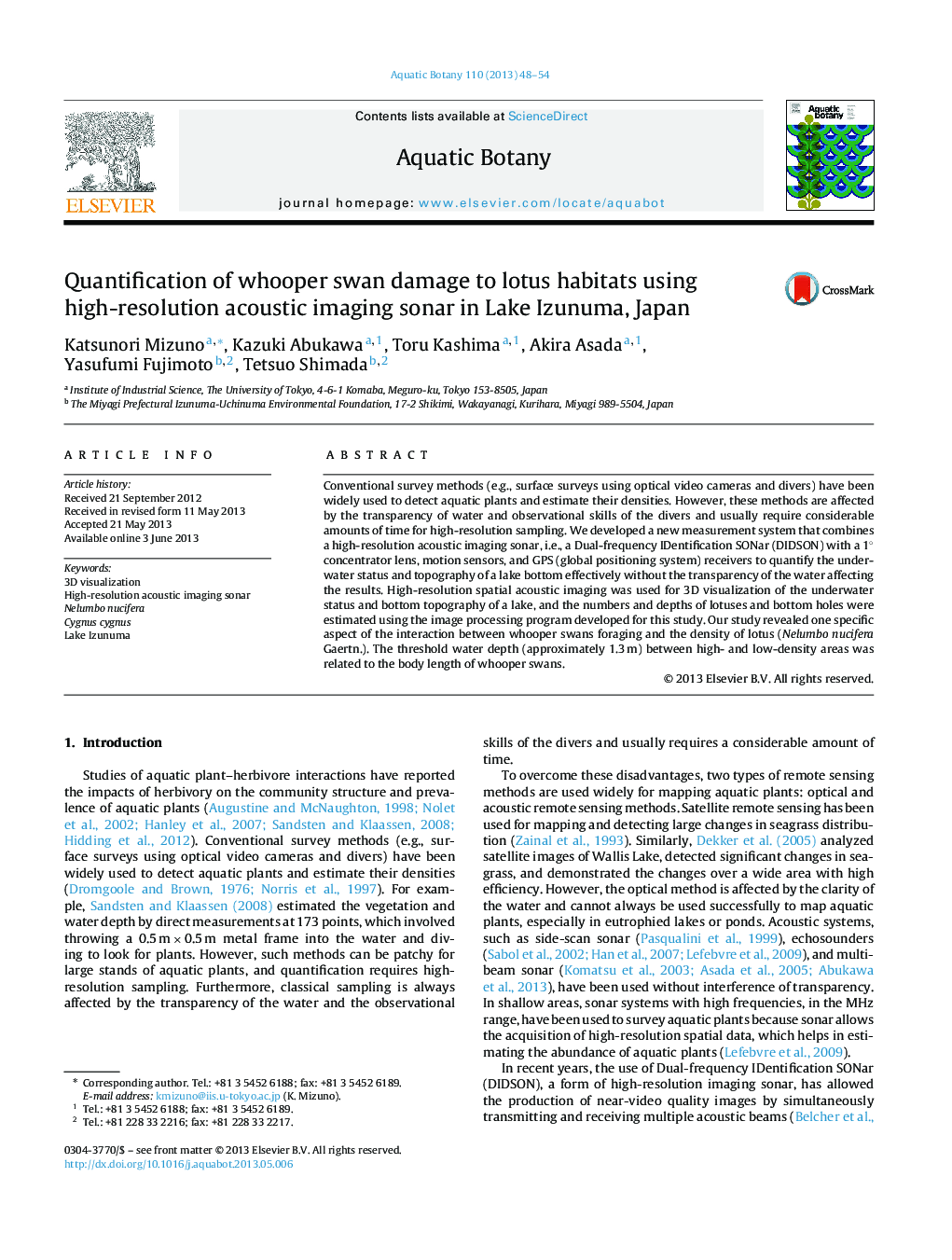| Article ID | Journal | Published Year | Pages | File Type |
|---|---|---|---|---|
| 6381753 | Aquatic Botany | 2013 | 7 Pages |
â¢We develop a method for investigating the status of lakes using 3D visual imaging.â¢The lotus density is semi-automatically calculated using 2D acoustic images.â¢The lake bottom hole is semi-automatically counted using 2D acoustic images.â¢Changing of the lotus density is related to the body length of whooper swans.
Conventional survey methods (e.g., surface surveys using optical video cameras and divers) have been widely used to detect aquatic plants and estimate their densities. However, these methods are affected by the transparency of water and observational skills of the divers and usually require considerable amounts of time for high-resolution sampling. We developed a new measurement system that combines a high-resolution acoustic imaging sonar, i.e., a Dual-frequency IDentification SONar (DIDSON) with a 1° concentrator lens, motion sensors, and GPS (global positioning system) receivers to quantify the underwater status and topography of a lake bottom effectively without the transparency of the water affecting the results. High-resolution spatial acoustic imaging was used for 3D visualization of the underwater status and bottom topography of a lake, and the numbers and depths of lotuses and bottom holes were estimated using the image processing program developed for this study. Our study revealed one specific aspect of the interaction between whooper swans foraging and the density of lotus (Nelumbo nucifera Gaertn.). The threshold water depth (approximately 1.3 m) between high- and low-density areas was related to the body length of whooper swans.
